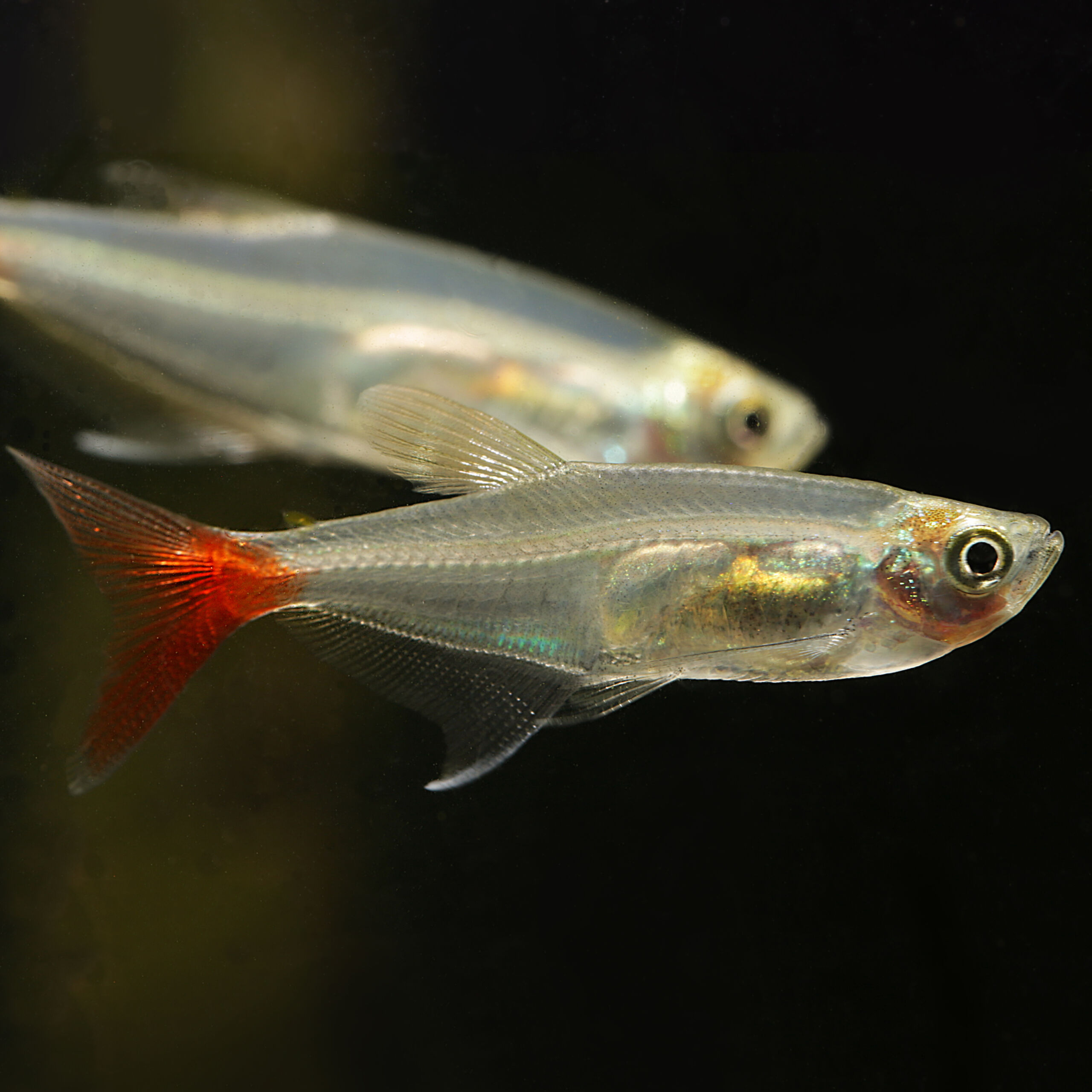Glass Bloodfin Tetra
Prionobrama filigera
The Glass Bloodfin Tetra owes its name not only to its “glass-like” body, but also to its bright red tail fin.
- peaceful schooling fish
- very interesting to look at
- "glass-like" body
1 in stock
 Delivery in a few working days
Delivery in a few working days
 Free shipping from €60 across Austria
Free shipping from €60 across Austria





Important data
Product description & details
Prionobrama filigera, also known as the Glass Bloodfin Tetra, is native to South America, where it is widespread in the Amazon basin. Visually, the Glass Bloodfin Tetra is something very special. Its body is almost completely transparent – only the tail fin shines in a bright red.
Care in the aquarium
In the aquarium, the Glass Bloodfin Tetra feels comfortable with an edge length of at least 80cm and in a group of at least 10 members of its species. Since this fish is a bit more skittish and stays mainly in the middle and upper area of the tank, there should be enough hiding places as well as floating plants or plants that reach to the surface. The aquarium should also have a cover so that it cannot jump out. The tetra gets along very well with most species of fish – it just shouldn’t be kept with overly aggressive fish, as it is very peaceful itself. This tetra is not too difficult to keep. The water should be soft to medium hard (< 15°dGH) and the pH value should be between 6.0 and 7.0.
Feeding
In nature, the Glass Bloodfin Tetra feeds mainly on small crustaceans and worms. In the aquarium, feeding this mainly carnivorous (meat-eating) fish is not very complicated: live and frozen food such as daphnia, artemia, bloodworms or blackworms are often eaten, but flake and granular food are also accepted.
Sexual characteristics and breeding
The males of the Glass Bloodfin Tetra differ from the stronger and larger females due to their slimmer physique and shorter body length. Females also have strongly elongated first rays on the anal fin. In males, however, these can have a black line. In contrast to most other species of tetras, breeding the Glass Bloodfin Tetra is successful in the aquarium even with medium-hard water <10°dGH and an acidic to neutral pH value below 7.0. Tetras are free-spawners, so the tiny, approximately 200-350 eggs are freely released and fertilized between preferably fine-feathered plants or mosses near the water surface without subsequent brood care. Since this species is a spawning predator and does not stop at its own offspring, there should be a separate breeding tank from which the parents are removed after spawning. The first feeding of the young fish, which hatch after about 14-15 hours, takes place after the yolk sac has been consumed with the smallest food such as dust food or infusoria.





